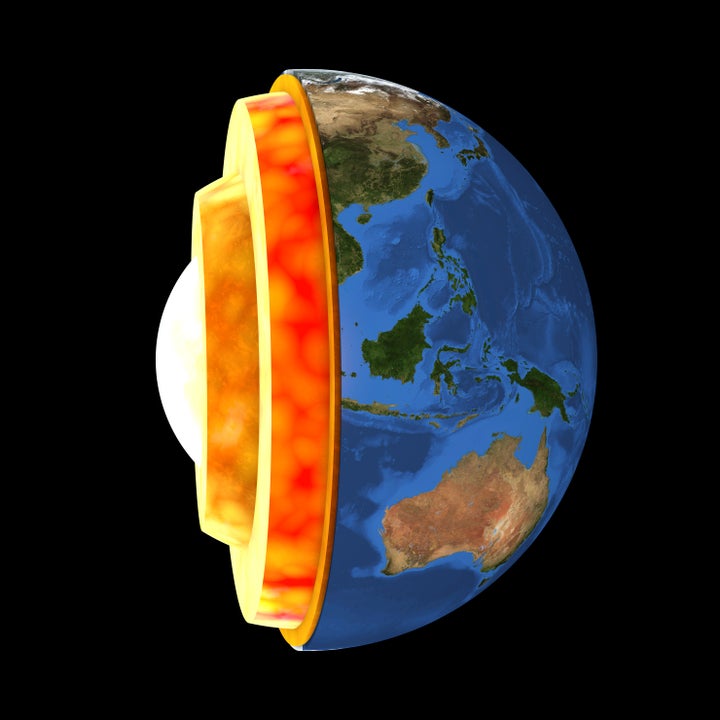
There are two giant but mysterious structures underneath the Earth’s surface, which just might be part of an ancient planet.
Yep, all this time we’ve been looking to solve the mysteries in space – but we’ve actually been standing on one all along.
That’s because underneath Africa and the Pacific, there are two large structures which are estimated to take up between three and nine percent of the Earth’s total volume, sitting between the surface and the planet’s metallic core.
The one under Africa is known as Tuzo, and is thought to be around 497 miles in height. The other is known as Jason, and is a little taller – this is estimated to be up to 1,118 miles in height.
But, how did we ever uncover these otherworldly objects? After all, we’ve never actually dug all the way through the Earth’s crust because we don’t have the capabilities to do that (yet).
Well, turns out earthquakes have been offering a pretty good idea of what’s going on down below through seismic tomography – they send out energy in all directions, moving at different speeds through different rocks and liquids deeper within the planets.
Scientists then used this data to create a map of the Earth’s hidden layers.
It’s through this process that scientists can unravel where these “blobs” (also known as large low shear velocity provinces) are, because the waves from earthquakes travel much more slowly through them.
But, it’s still not clear what it’s made of.
They could be made up of oceanic crust that’s accumulated over the years, but, as outlet IFL Science pointed out, there’s also a theory about Theia.
That’s a Mars-sized planet which may or may not have existed around 4.5 billion years ago. As the theory goes, it collided with the Earth, and threw off enough rock to form the Moon – and it just may have left a few bits of itself inside the Earth’s crust in the process.
These different bits of rock could survive if just 1.5 to 3.5 percent denser than the Earth’s material. They may have sunk to the bottom of the planet and ended up settling somewhere above the Earth’s core.
This was confirmed by a study led by Qian Yuan from Arizona State University back in 2021, who said the structures are “the largest thing in the Earth’s mantle”.
Then in October last year, NASA theorised that the collision between the Earth and Theia may have created our orbiting Moon within just a few hours.
But, any concrete evidence about Theia, and the impact it had on Earth, remains out of reach – for now.
As Bernhard Steinberger, geodynamics researcher at GFZ German Research Centre of Geosciences and the University of Oslo in Norway, told the BBC: “We really know much less about the Earth’s mantle than about outer space where we can look with telescopes, because everything we know is very, very indirect.”
